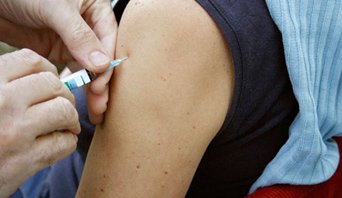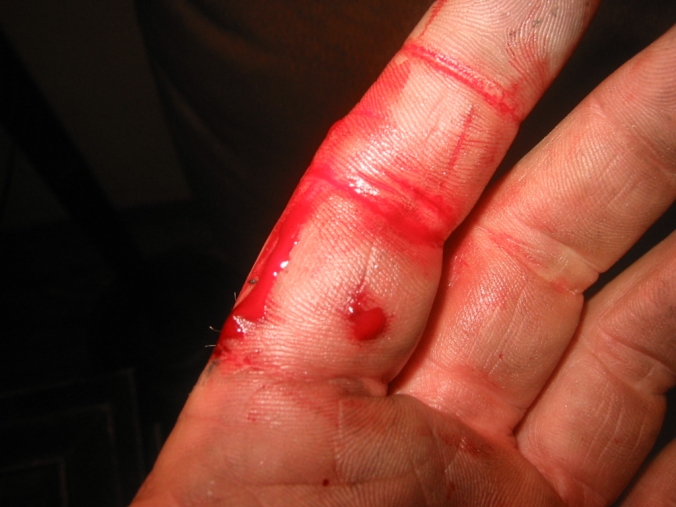Tetanus, commonly known as lockjaw, is a severe, yet preventable disease caused by a bacterial infection. It affects the nervous system and hampers the normal functioning of the muscles.
Tetanus was first described by Hippocrates almost 30 centuries ago. In the year 1884, Arthur Nicolaier a German Jewish internist was able to isolate the Clostridium tetani bacteria from the soil. He injected the bacteria into an animal and was able to recreate a case of tetanus for observational purposes.

In 1889, a Japanese physician was able to isolate the bacteria from an infected human and also demonstrated that the toxic substance produced by the bacteria can be neutralized by administering specific antibodies.
The Tetanus Infection – The Primary Cause
Tetanus is caused when minor or major cuts or wounds become infected by the bacteria Clostridium tetani. This kind of bacteria is usually found in soil that is contaminated with animal feces and agricultural manure. Once the bacteria gains entry into the body, they move deep inside the body as they are unable to multiply in oxygen-rich surroundings. Once inside the body, the bacterial spores produce a toxic chemical called neurotoxin, which enters the bloodstream and the lymphatic system. As they are carried to different parts of the body in the blood, the toxic chemical disrupts the activity of the nervous system and hampers the functioning of the muscles in the body.
The Symptoms Of The Tetanus Infection
The characteristic features of this disease include rigidity and convulsive spasms that occur in the muscles. The muscles close to the infected site begin to show the initial symptoms, followed by the muscles in the jaw, which becomes stiff and prevent the opening and closing of the mouth. The muscle spasms soon spread to the neck, chest, shoulder, back, abdomen, hands, and legs. If timely treatment is not provided, the condition could go so far as to cause the death of the affected individual.
What’s Involved In The Diagnosis?
There are no specific laboratory tests that can be used to diagnose tetanus. Diagnosis is usually made based on the clinical symptoms and physical examination. However, there are few tests that can be carried out to confirm the diagnosis.
For example, the Clostridium tetani bacteria can be isolated from the infected area and then the toxin released by the bacteria and the antibodies for the toxin can be detected in the blood sample, Also, detection tests for rabies, meningitis, poisoning by strychnine and diseases with similar kind of symptoms can be carried out to confirm or rule out a case of tetanus.
The Tetanus Infection – The Treatment Options Available
There is no specific treatment for tetanus as the disease is not curable. However, the disease can be prevented by taking care of the any cuts or wounds inflicted on the body by disinfecting them, applying specific antiseptics, and dressing at the site of injury. This nullifies the chances of contracting a tetanus infection.
Medicines like the antitoxin named tetanus immune globulin are administered to individuals who show symptoms of tetanus in order to neutralize the affect of the toxin released by the bacteria. Antibiotics that work against the bacteria, sedatives that control the muscle spasms, and medicines that control the involuntary function of the muscles by paralyzing them may also be prescribed.
The tetanus-infected individuals are required to undergo a long period of treatment. In many cases, they have to be placed in Intensive Care Units (ICUs) with assisted breathing facilities, as natural breathing becomes difficult due to constant muscle spasms. As the affected individuals lose a lot of energy due to such prolonged spasms in the body, they require nutritious food rich in calories. If chewing and swallowing food becomes difficult, the food is given through a tube attached to the stomach or is injected through a vein.
Prevention Of Tetanus
Tetanus is quite widespread, but it can now be prevented through immunization. In the year 1897, Edmond Nocard was able to show that passively transferring antitoxin into an individual can create a protective effect. This kind of passive immunization was extensively used for the first time during World War I. However, it was Gaston Ramon and P. Descombey who produced the tetanus toxoid vaccine in 1924. It was later used during World War II in order to prevent the spread of tetanus.

The tetanus vaccine is a part of the DPT vaccine, which is given to prevent diphtheria and pertussis (whooping cough). The vaccine is able to activate the growth of antibodies to the tetanus disease in the body.
The tetanus shot is given at 5 different points of time after birth. The first is usually given at the age of 2 months, followed by one at 4 months, 6 months, between 15 to 18 months, and finally between 4 to 6 years. A booster dose is usually given every 10 years until the age of 65 years to ensure continued immunity against tetanus
The tetanus infection can be quite painful and often turns fatal if left untreated. For this reason, it is important to consult a doctor at the first sign of tetanus. Of course, the best thing you can do is prevent the disease by getting the tetanus vaccine administered and by cleaning wounds properly to avoid infection.